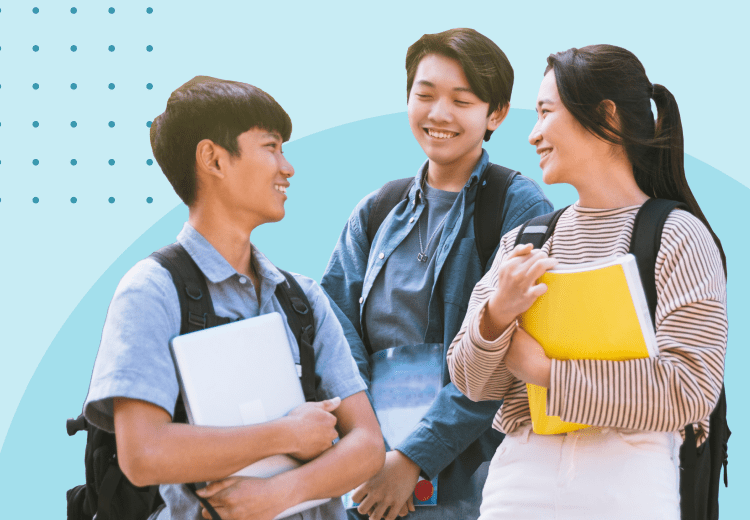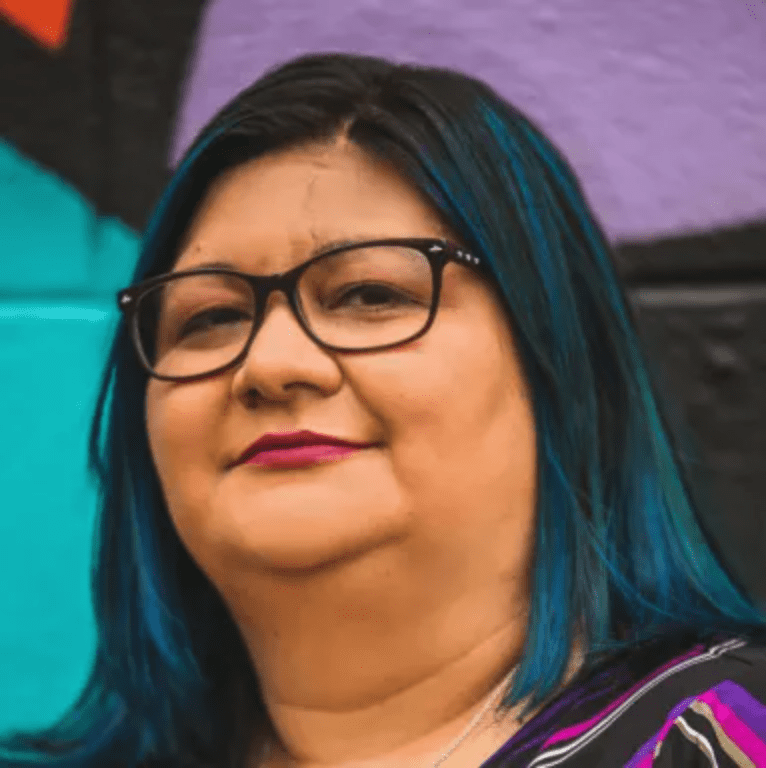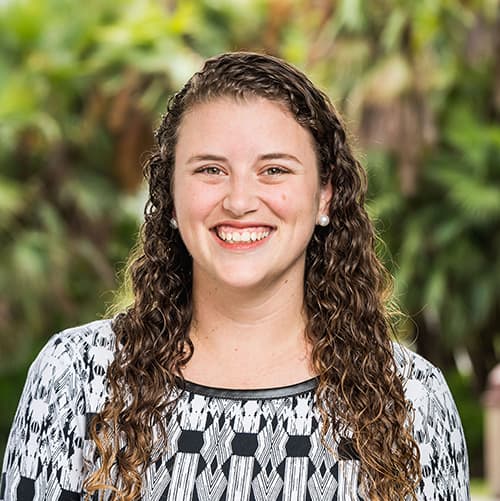Growing Population Signals Stronger Ties Within the AAPI Community
Writer
Editor & Writer
Reviewer
Writer
Editor & Writer
Reviewer
Asian Americans and Pacific Islanders (AAPIs) have had a great impact in the United States, and their influence should continue to grow moving forward. Since the 2000-01 school year, college enrollment has increased 36% among AAPI students in the U.S., hopefully preparing graduates to find success and support causes they care about.
Additionally, a recent Politico article discussed how members of the AAPI community have strengthened their efforts to #StopAsianHate since xenophobic sentiments shared by former President Trump inspired an increase in racially motivated attacks across the country.
The AAPI Community Is a Diverse and Growing Population
Whether helping to build the transcontinental railroad, laboring at fruit and sugar plantations on the Hawaiian islands, or surviving and contributing to their communities in many other ways, Asian American and Pacific Islander (AAPI) people have long played an integral part in the history of the United States. To recognize the distinctions between these groups, we should note that parts of this article highlight information relating to Asian Americans rather than aggregated information about AAPI people.
According to the Pew Research Center, the Asian population in the U.S. was less than 1 million in 1960, but it is projected to reach 46.2 million by 2060. The cultural mosaic that makes up Asian Americans consists of over 50 different Asian ethnic groups
"I think it is a very important trend because this diversity would form stronger bonds and connect us within our communities. We need more voices in this space that would not only stand up for those who are not being heard, but to also empower others to find their own voice."
— Nandita Gupta, Accessibility Program Manager at Microsoft
Currently, Chinese Americans make up the largest ethnic group under this umbrella, representing 24% of the Asian population in the U.S. They are followed by Indian Americans (21%) and Filipino Americans (19%). These populations are increasing each year, and this growth has impacted the world of higher education.
The visibility of Asian American students on college campuses has increased significantly over the past 50 years. As more generations have found footing within the United States, there has been a steady increase in Asian American students pursuing higher education.
Today, about one-third of all Americans over the age of 25 hold a bachelor's degree. However, Asian American students far outpace their counterparts from other demographic groups — more than half of Asian Americans over 25 have a bachelor's degree. However, it is important to note that there are wide educational disparities among Asian ethnic groups.
How 2020 Changed the Way Asian Americans Look at Themselves
Many Asian Americans have come together as a more cohesive group over the last couple of years. This solidarity was spurred largely by a recent shift in the social and political climate. The outbreak of COVID-19 coupled with the xenophobic words of former President Donald Trump led to a rise in anti-Asian sentiment in the United States.
An increase in animosity and overt attacks against Asian Americans has greatly impacted the community's mental health. Many people fear being verbally abused or physically assaulted. In response to discrimination and attacks, many members of the AAPI community have banded together to demand greater visibility and representation in many areas, including higher education.
Why It's Important to Recognize Differences Between Ethnicities and Cultural Groups
As members of a global society, we must learn to understand the culture of those around us. This includes groups that may not be as visible where they are in the minority, such as AAPI people in most of the United States.
Because cultures both shape and reflect people's values, taking time to understand our own and others' cultures can help us build stronger relationships with one another. By educating ourselves and others about our similarities and differences, we can help reduce the negative impact of racial and ethnic divisions, which often result in misunderstandings. We can also better ensure that everyone has access to opportunities based on their humanity instead of being excluded due to harmful assumptions.
"We are all unique in our own ways, especially with our various intersectionality of race, culture, religion, disabilities, ethnicities, and nationalities and with this growing community we need to gain a deeper understanding of how they are all connected.
"We all may experience shared experiences that bind us and bring us together as communities."
— Nandita Gupta, Accessibility Program Manager at Microsoft
When we learn what people from other cultures value, we can better avoid causing harm. This includes avoiding acts of cultural appropriation, such as someone wearing an indigenous headdress when they have no ties to the culture from which the headdress comes. By respecting the feelings of a given community and learning how to proceed when people from the same communities have different opinions about how their cultural practices should be respected and represented, we can avoid taking away their agency.
Seeking a better understanding of cultural practices, such as the way people celebrate Thanksgiving in the United States, can even allow people to start repairing historic harms. Additionally, educating ourselves helps us recenter our thinking and better differentiate between cultural appreciation and cultural appropriation. By learning about social issues of representation, we can combat misconceptions and help stem the tide of hate crimes, such as those affecting Asian American college students in recent years.
How to Celebrate and Support the AAPI Community
- Each May, join your local community in celebrating AAPI Heritage Month.
- Offer support and empower Asian-owned businesses in your community.
- Be an active ally and support community organizations that help paint a broader portrait of what it means to be AAPI.
- Learn more about the early history of AAPI people, who are often neglected in history books. For example, take the time to learn about Angel Island — the Ellis Island of the West.
- Support the development and continued funding of AAPI studies programs at universities.
- Support AAPI representation in the arts, such as the East West Players — a theatre company whose mission is to showcase AAPI talent.
- Donate to a local nonprofit that supports your city's AAPI community.
Explore more resources for our Asian American and Pacific Islander students
Supporting you at every step of your journey.
Discover Now
How Colleges and Universities Are Getting It Right
Universities serve as community builders. Therefore, it is important that college students understand the significant role they play in developing an inclusive campus culture.
In some ways, the Asian American experience on college campuses has improved over the past few years, with students demanding expanded course offerings that reflect the diversity of the Asian community. Other improvements include expanding mental health services to address concerns unique to Asian American students, improving systems to report racially charged incidents, and providing funding that brings more representation in the area of Asian American studies.
There has been a visible increase in funding to support Asian American studies programs on many campuses in the past year. For example, at Harvard University, Asian American alumni leaders exerted their influence and provided donations to help expand the Asian American studies program and endow new professorships and fellowships. These courses educate students about Asian Americans' contributions to the United States.
In addition, universities are helping to break the myth of Asian students as the "model minority." One way they're doing this is by providing both merit-based and need-based AAPI Scholarships to ensure that more students have access to higher education.
Conclusion
The AAPI community has greatly shaped the development of the United States over the past 150 years, and it will continue to contribute to America's future. Despite the rise of anti-Asian sentiment in recent years, this diverse community has united to demand changes in the social and political landscapes.
With Advice From:

Nandita Gupta
Nandita is an Accessibility Program Manager at Microsoft where she works on a product that empowers users to create inclusive and accessible experiences for all users. She has been named Influential Women of Manufacturing 2019 by Putman Media. She is a Board member on different boards within the community including Lime Connect, an organization with a mission for rebranding disability through achievement where she serves on the Community Engagement Committee. She also serves on the Accessibility Leadership Council for Disability: IN. As a Board Member for a non-profit organization – Caroline Calouche & Co, she leads the Diversity, Equity and Inclusion Committee as the Chair where she is working on creating inclusive spaces within the dancing communities.
She has been actively involved in various mentoring organizations over the past years and was inducted into the Susan M. Daniels Disability Mentoring Hall of Fame. She has been a speaker at numerous conferences including Grace Hopper Celebration for Women in Computing, Assistive Technology Industry Association 2020, World Information Architecture Day.







